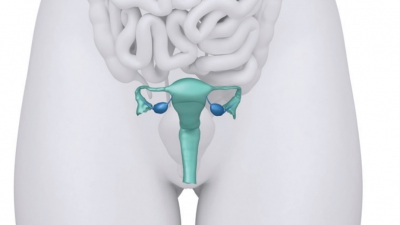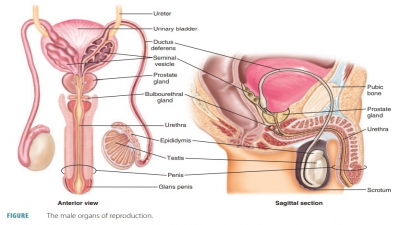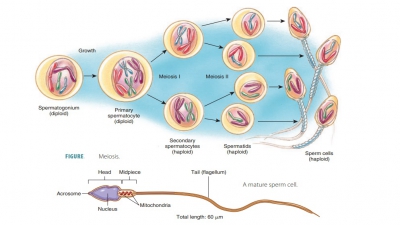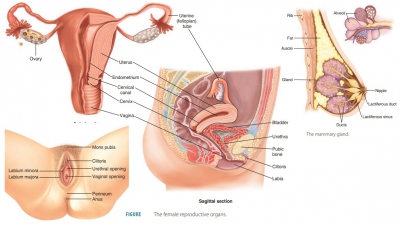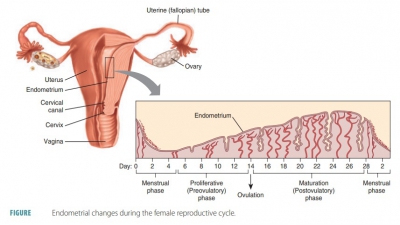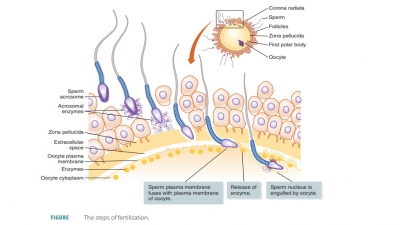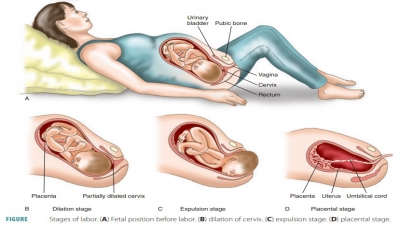Sexually Transmitted Infections (STI)
| Home | | Anatomy and Physiology | | Anatomy and Physiology Health Education (APHE) |Chapter: Anatomy and Physiology for Health Professionals: Reproductive System
Sexually Transmitted Infections: Chlamydia, Gonorrhea, Syphilis, Genital Herpes, Genital Warts, Trichomoniasis
Sexually
Transmitted Infections
STIs, formerly known as sexually
transmitted diseases and venereal
diseases, are so named because they are spread by sexual contact. The
highest rates of STIs in developed countries occur in the United States. Of the
approximately 20 million Americans per year who get STI, about 10 million of
these are adolescents. Latex condoms protect against STIs, and their use is
encour-aged widely.
Most reproductive disorders occur because of STIs. Viral
diseases have now become the most com-mon types of STIs; previously, bacterial
diseases were most common. The most deadly STI is AIDS, which is caused by HIV.
Many recognized STIs are called “silent infections,” because they may persist
in their early stages without any symptoms. Often, once symp-toms occur, it is
too late to prevent complications or spread of the disease to sexual partners.
Common symptoms are:
■■
A burning sensation during urination
■■
Lower abdominal pain
■■
Fever
■■
Swollen neck glands
■■
Discharge from the vagina or penis
■■
Genital or anal pain, itching, or inflammation
■■
Pain during intercourse
■■
Oral or genital sores, blisters, bumps, or rash
■■ Itchy,
runny eyes
Chlamydia
Chlamydia
is the most common bacterial STI in the United States, infecting between one and two
million Americans every year and increasing in prevalence in people of college
age. Between 25% and 50% of diagnosed cases of pelvic inflammatory disease are
caused by chlamydia. More than 100,000 infants are born to women with chlamydia
every year. The causative agent, Chlamydia
trachomatis, is present in 20% of men and 30% of women who also have
gon-orrhea. Chlamydia trachomatis has
a dependence on host cells that is similar to a virus. It incubates within body
cells in about seven days. In 2016, there was a record high amount of reported
cases of chlamydia: 1.5 million people.
Symptoms of chlamydia include urethritis, vag-inal
discharge, painful intercourse, irregular men-ses, and pain in the abdomen,
rectum, or testicles. Urethritis is signified by painful, frequent urination
and, in males, a thick penile discharge. Males may also experience a widespread
urogenital tract infec-tion as well as arthritis. Although 80% of infected
women have no symptoms, it is a primary cause of female sterility. An infant
born to an infected mother often develops conjunctivitis, and especially a form
of this condition known as trachoma,
which is pain-ful and leads to scarring of the cornea if not treated.Other
complications in infants include respiratory tract inflammations such as
pneumonia. Diagnosis of chlamydia requires cell cultures. Treatment with
tetracycline is simple and effective.
Gonorrhea
Gonorrhea,
commonly known as “the clap,” occurs most
often in adolescents and young adults. It is caused by the bacterium Neisseria gonorrhoeae. This bacterium
invades the mucosae of the repro-ductive and urinary tracts. It is spread by
contact with genital, pharyngeal, and anal mucosal surfaces. Gonorrhea is the
second most commonly reported notifiable disease in the United States. In 2016,
there were nearly 469,000 reported cases in this country, with more cases
reported by males than females.
Symptoms of gonorrhea in men are usually those of
urethritis. If untreated, gonorrhea can cause urethral constriction and
inflammation of the entire male duct system. In females, gonorrhea causes
symptoms in 80% of cases, which include abdominal discomfort, abnormal uterine
bleeding, vaginal discharge, and occasional urethral abnormalities similar to
those that affect males. Gonorrhea in females leads to pelvic inflammatory
disease and sterility. This disease has dropped to its lowest levels ever
recorded in the United States, primarily because of antibiotic use. Ceftriaxone
is the most commonly used antibiotic for gonorrhea. Unfortunately,
antibiotic-resistant strains of gonorrhea are becoming more prevalent.
Syphilis
Syphilis
is less common than chlamydia or gonorrhea in the United States, but is increasing in
prevalence. It is caused by a corkscrew-shaped bacterium called Treponema pallidum. Syphilis is usually transmitted by sexual contact, but may also be
transmitted by an infected mother to her fetus. When this occurs, the fetus is
usually stillborn or dies soon after birth. The bacterium can easily penetrate
abraded skin as well as intact mucosae. Just a few hours after exposure, a
systemic infection develops but without any initial symptoms. In 2016, the national
primary and second-ary syphilis rate was 8.7 cases per 100,000 people, the
highest rate reported since 1993. This rate increased among men by 14.7% and
among women by 35.7%, though men are affected most.
Within two to three weeks, a chancre appears at the site where the bacterium invaded the body. A
chan-cre is a red, painless primary region (FIGURE 25-14). It usually appears on the penis in males, but in females
it may be inside the vagina or on the cervix, mak-ing it nearly undetectable.
The chancre ulcerates and crusts. Within a few weeks, it heals spontaneously
and disappears.
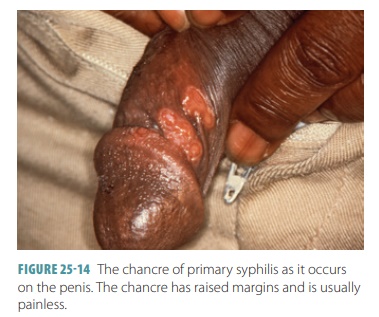
Without treatment, secondary signs of syph-ilis appear in several more weeks. One of the ini-tial symptoms of this phase is a pink skin rash over most of the body. Fever and joint pain commonly follow. All these signs and symptoms disappear on their own within three to 12 weeks. The disease then enters a latent period. The only way to detect it at this time is via a blood test. This stage may be killed by the immune system or may last for the rest of the person’s life. It also may be followed by tertiary syphilis . This phase is characterized by destructive lesions known as gummas, which appear on the skin, blood vessels, bones, and structures of the central nervous system. For all stages of syphilis, penicillin is the treatment of choice.
Genital Herpes
Genital
herpes is caused by the herpes
simplex virus 2, and is the most
prevalent viral STI. The herpes simplex
viruses are extremely difficult to control, remaining silent for weeks, months,
or years, and then flaring up suddenly. When they appear, there is a quick
development of blister-like lesions. Herpes simplex is transmitted by direct
skin-to-skin contact when the virus is shedding or via infectious secre-tions.
The lesions appearing on the genitals are pain-ful. If the condition is
congenital, it can cause severe fetal malformations.
About 85% of Americans with genital herpes are unaware they
are infected; as many as 25% of women and 20% of men have genital herpes. Only
15% of these people have actual signs of the infection. Once infected, genital
herpes remain forever in a person’s body. When a person is not experiencing an
outbreak, there is still a 4% to 10% chance of transmitting the infection. The
treatment of choice is the antiviral drug acyclovir.
This medication heals lesions more quickly
and reduces frequency of flare-ups.
Genital Warts
Genital
warts are the second most common STI in the United States. They are caused by HPV, which is actually a group of more
than 60 different viruses. About 79 million Americans are currently infected
with HPV. Every year, about three million new cases of genital warts occur in
America. It is believed that HPV infection increases cancer risks in areas of
the body affected. The HPV virus is linked to 80% of all cases of invasive
cervical cancer. However, most viral strains causing genital warts do not cause
cer-vical cancer. The use of the HPV vaccination has reduced the amount of new
cases of genital warts per year by about 50%.
Genital warts usually recur, and treatment is dif-ficult and
under heavy debate. Unless widespread, many health professionals prefer not to
treat geni-tal warts. Others use laser therapy or cryosurgery to remove them.
Another treatment involves the use of alpha-interferon.
Trichomoniasis
In sexually active young females in the United States, trichomoniasis is the most common cur-able STI. It
is a parasitic infection that accounts for approximately five million new cases
every year (FIGURE
25-15). Signs and symptoms include a yellow-green vaginal
discharge with a strong odor, although many infected women have no symptoms. It
is easily and inexpensively treated with either met-ronidazole or tinidazole.
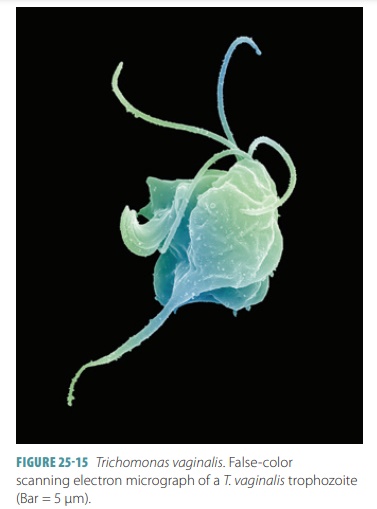
1. Describe the most commonly seen bacterial STI in the United
States.
2. Which STIs are listed as potentially resulting in
sterility?
3. Which pathogen is commonly linked with cervical cancer?
Related Topics
